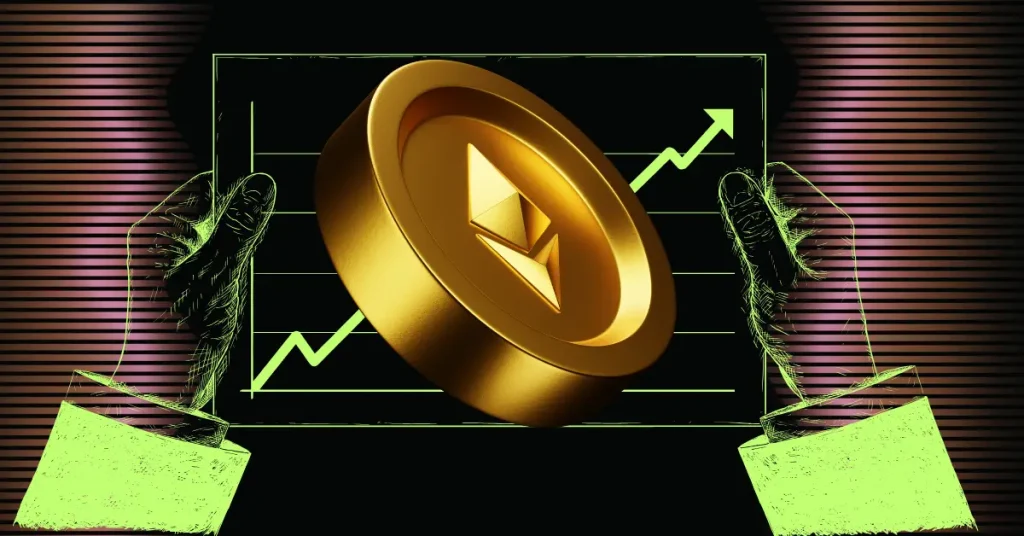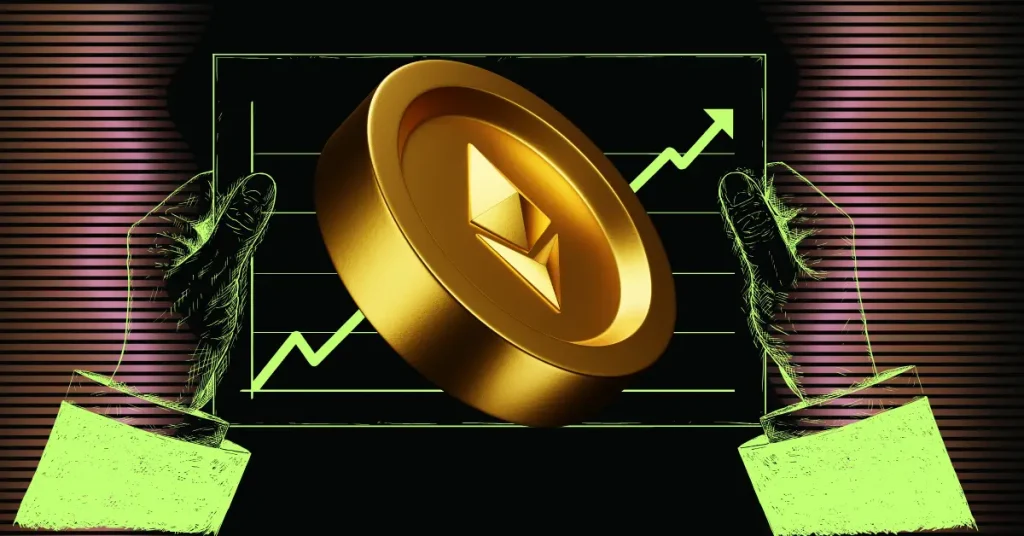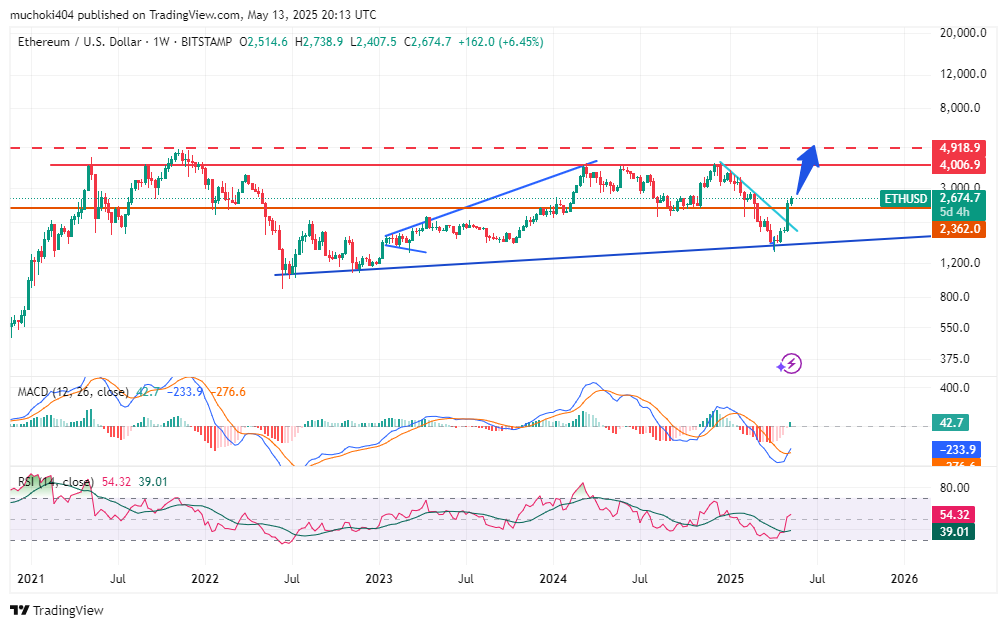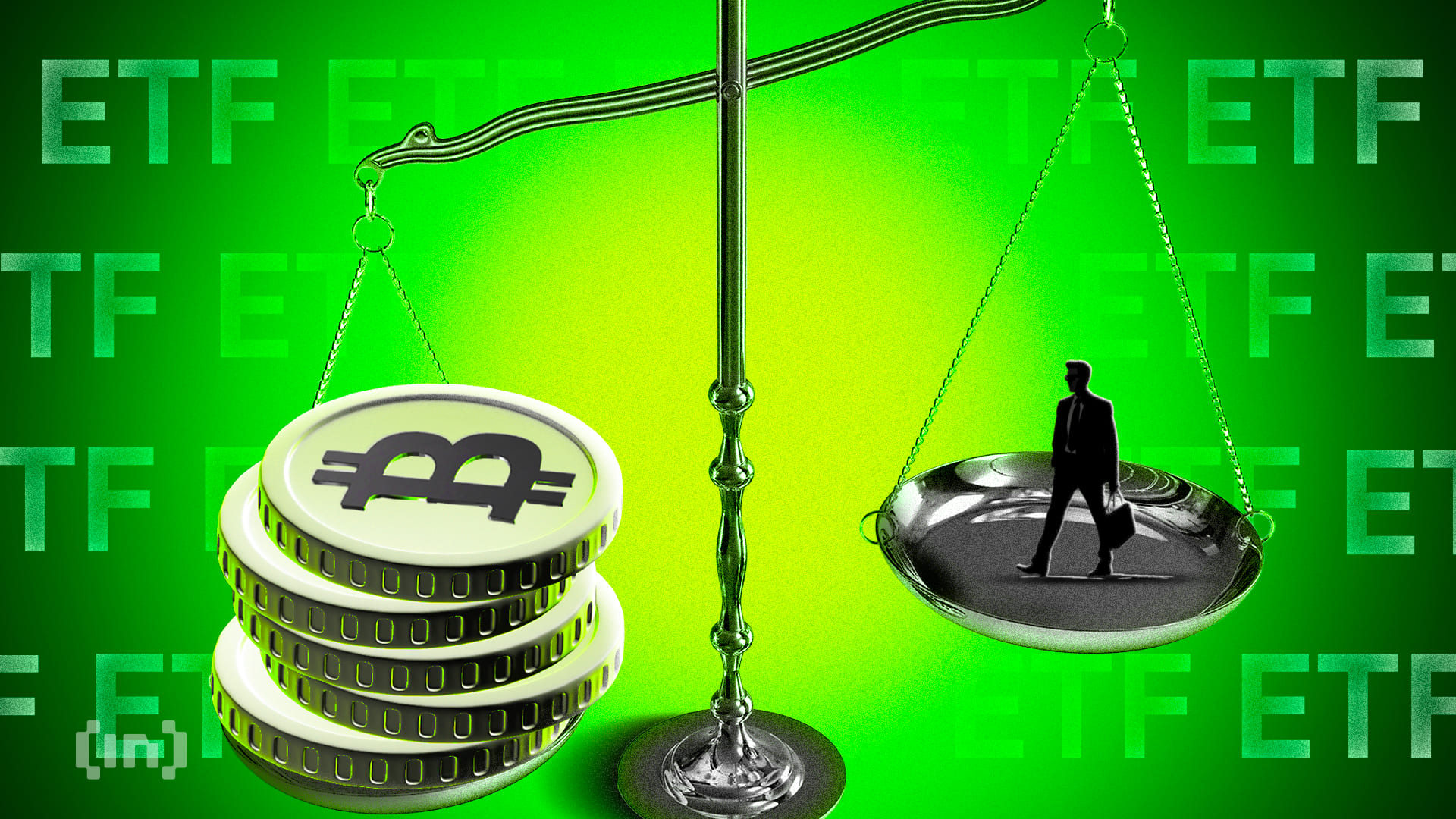
The post Dogecoin (DOGE) Poised for 21% Drop, Bearish Setup Confirmed? appeared first on Coinpedia Fintech News
Despite a recent 16% price decline, Dogecoin (DOGE), the world’s largest crypto meme coin, is poised to continue its downward momentum. The reason behind this speculation is the formation of a bearish price action pattern on the daily time frame amid ongoing bearish market sentiment.
Dogecoin (DOGE) Technical Analysis and Upcoming Levels
According to CoinPedia’s technical analysis, DOGE appears to be bearish as it has formed a textbook-style head and shoulders price action pattern on the daily time frame. Additionally, the price of the meme coin is on the verge of a major breakdown.
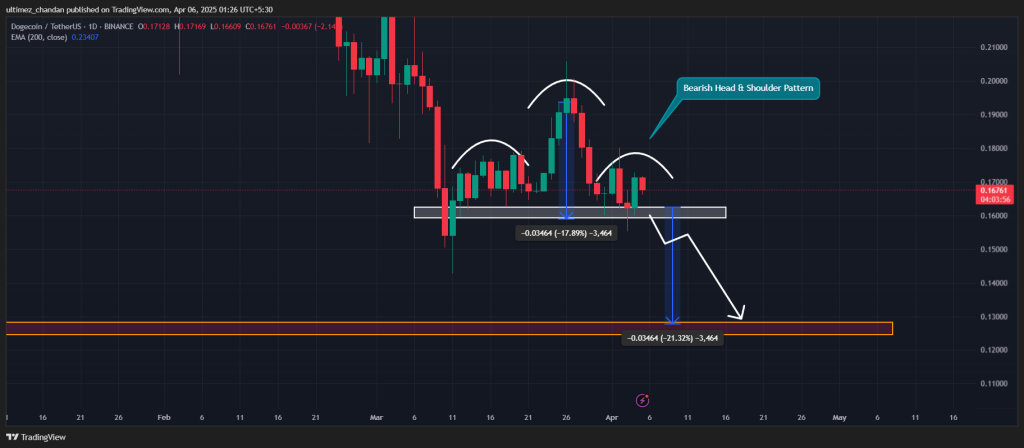
Based on recent price momentum and historical patterns, if the meme coin breaches the neckline of the bearish pattern and closes a daily candle below the $0.16 mark, it could drop by 21% to reach the support level of $0.13 in the future.
As of now, DOGE is trading below the 200 Exponential Moving Average (EMA) on both the daily and four-hour time frames. This indicator suggests that the meme coin is in a strong bearish trend and is following a downward momentum.
However, traders and investors often use this setup to sell off or short the asset whenever its price shows any signs of upward movement.
Current Price Momentum
At press time, DOGE is trading near $0.168 and has recorded a 1% price drop over the past 24 hours. Meanwhile, during the same period, its trading volume declined by 60%, indicating reduced participation from traders and investors—potentially due to bearish market sentiment.
$6 Million Worth of DOGE Outflow
However, amid this bearish outlook, investors appear to be accumulating tokens, potentially signaling a classic buy-the-dip strategy, according to on-chain analytics firm Coinglass.

Data on spot inflows and outflows reveals that exchanges have seen an outflow of approximately $6.11 million worth of DOGE over the past 24 hours. This substantial outflow suggests potential accumulation and could lead to increased buying pressure.
Yet, while this massive outflow has the potential to trigger an upside rally, the prevailing bearish market sentiment may make it difficult to sustain such upward momentum.


